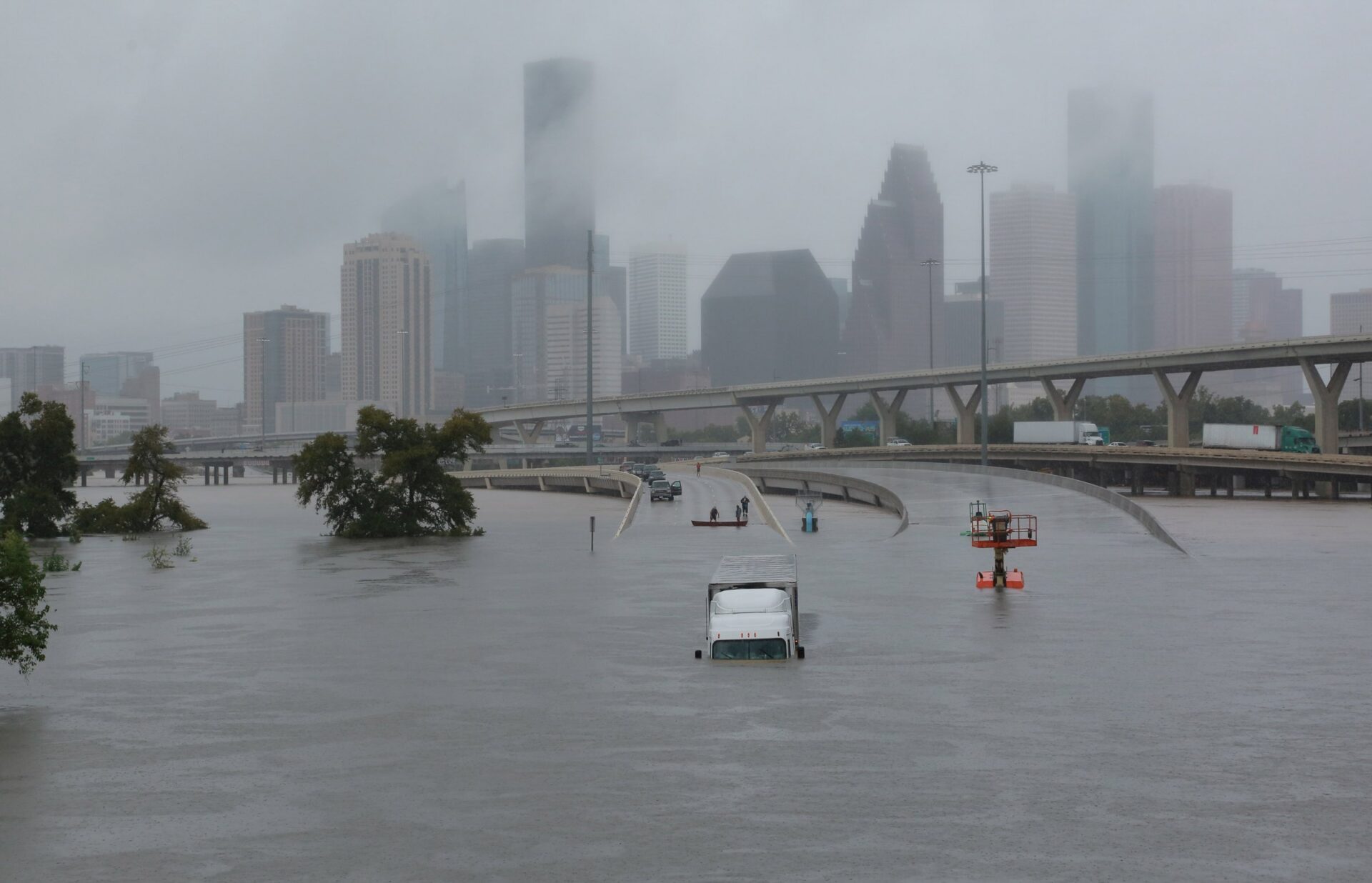
Hurricane Harvey: Energy Markets Respond to the Flooding of a Major Energy Hub
On Friday night, August 25th, the strongest storm to hit the Texas coast in half a century made landfall 20 miles northeast of Corpus Christi as a category 4 hurricane. Over the weekend, Hurricane Harvey moved inland before stalling 60 miles southwest of Houston, devastating the region with record rainfall. The Houston area receives 50 inches of rain in an average year. Over the last four days, the city have been inundated with over 40 inches of rain, and it is expected that by Tuesday evening, some areas will have received a full years-worth of rain in under a week.
Large portions of central Houston, and coastal towns in the region are under feet of water, affecting millions of people, and causing billions of dollars in property damage. Already, the storm has claimed between 7 and 10 lives, and FEMA predicts 30,000 people are in need of emergency shelter. At the time of writing, flooding in some areas of the region is still expected to worsen as the storm lingers off the coast.
The Flooding of an Energy Hub
One outcome of Hurricane Harvey that is likely to be felt for days, and even weeks to come, is its impact on national and global energy markets. The Texas Gulf Coast, the area most impacted by this storm, supports a third of the nation’s oil refining capacity. Houston alone is home to approximately 15% of national refining capacity, and in preparation for the incoming storm, many of the largest refineries, including Exxon Mobil Corp’s Baytown refinery, Royal Dutch Shell PLC in Deer Park, Phillips 66 Sweeny in Houston, and Valero Energy Corps two refineries in Corpus Christi, shut down operations, and have yet to reopen. Many other refineries are operating at significantly reduced capacity owing to a limited workforce, emergency safety precautions, and limited transportation capabilities.
All told, refining capacity is estimated to be down by more than 2.2 million barrels per day, greater than 10% of the nation’s total refining capacity. In addition, roughly 22% of offshore oil production has been halted in the gulf of Mexico. Depending on the storms future path, Citgo’s Lake Charles refinery may also close, removing another 428,000 b/d from production. Some of these closed refineries may be operational in a few days; for others, recovery may take several weeks. ‘Cold’ restarts require a full operating staff, and present an additional risk of fires and explosions resulting from compromised equipment and/or oil.
Costs will be felt nationally, and internationally
Reduced refining capacity and a steady national demand for gasoline has sent prices to a two year high. As of Monday evening, wholesale gasoline prices were up 8% from a week ago. Over the coming days, consumers across the south, Midwest, and northeast of the country can expect to feel these costs at the pump.
Other heavily disrupted markets are likely to be outside the United States, in Mexico and other Latin American countries that rely heavily on refined fuel from the Texas Gulf region. Mexico is the largest importer of US refined fuel, relying on this supply meet three-quarters of their gasoline demand. Over 1 million b/d of gasoline destined for Mexico has already been interrupted, and there are concerns that if prices increase in the US, Mexico may have to look elsewhere for additional supplies of refined fuel. Brazil and Venezuela, once alternative suppliers for Mexico, today have reduced capacity for export.
Lessons to be learned
Hurricane Harvey should provide the nation with yet another reminder of the devastating impacts of global climate change. It is NOT a coincidence that nine of the ten costliest hurricanes in US history have occurred in the last 15 years. Nor is it a coincidence that five of those top ten hurricanes have made landfall along the Gulf Coast, where the vast majority of the United States’ offshore production, refining, and fuel shipping capacity resides. Port or channel access is necessary for the efficient transportation of oil, gas, and other petrochemical products, but these geographic constraints also leave the industry, and the families supported by this industry, vulnerable to catastrophic flooding.
The primary reason for delayed restarts to the oil and gas industry following these kinds of disasters is not facility damage, but an insufficient workforce. The faster the workforce can return to work, the lower the impact will be to the energy industry. Aggressive regional adaptation efforts to protect communities, such as home retrofits, levees, and wetland and barrier island restoration to protect coastal communities not only save the nation billions of dollars in disaster relief and property damage, but also ensure that energy markets are as resilient to these disturbances as possible.
Oscar Serpell
Deputy DirectorOscar Serpell oversees all student programming, alumni engagement, faculty and student grants, and visiting scholars. He is also a researcher, writer, and policy analyst working on research initiatives with students and Center partners.

